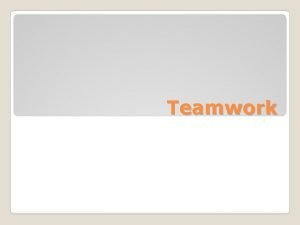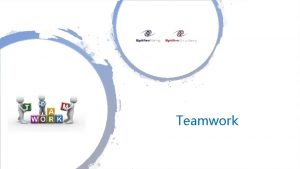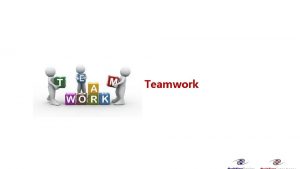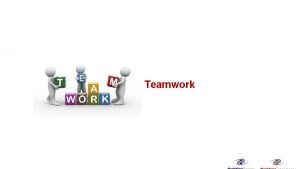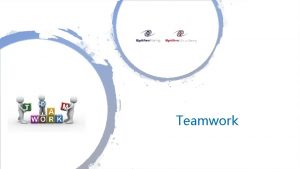Teamwork 1 02 Career Management Teamwork Actions that







- Slides: 7

Teamwork 1. 02 Career Management

Teamwork Actions that Facilitate Teamwork: Listen and communicate effectively. Follow up with responsibilities/assignments. Resolve conflicts. Motivate/inspire others. Support team goals. Show initiative. Accept assigned role(s). Share views, ideas and opinions in a positive manner. Be a problem solver, not a problem maker. Be open-minded and tolerant. Demonstrate trust. Stay focused.

Teamwork Actions that Impede Teamwork: Personality clashes Some people tend to be lazy and want others to do all the work Too many leadership styles Too many ideas of how tasks should be accomplished/end result Lack of vision/leadership

Effective & Ineffective Leadership Styles/Strategies �Authoritative/Autocratic �Participatory/Democratic �Laissez Faire

Authoritative/Autocratic We are exposed to this particular style very early in our childhood: our parents used this style on a daily basis. The leader is the only one with the expertise to bring the task to completion. The employee(s) participation isn't required in the implementation of the task. The task is time bound. Specific examples: Dismissing someone from their function: Once the decision is made, there isn't anything that will change your mind and the decision is not up for debate. Following a pre-defined process: Often seen in a production environment, where processes dictate the tasks as well as the order in which they must be completed. Emergency situation: All emergency situations require that the leader leads with an authoritative manner to effectively deploy and direct their team.

Participatory/Democratic The people have a more participatory role in the decision making process. One person retains final say over all decisions but allows others to share insight and ideas. This is often a highly effective form of leadership. People are more likely to excel in their positions and develop more skills when they feel empowered, and people are empowered when they are involved in the decision-making process. Although it may take some time to achieve full participation from a group, the end result will be rewarding if you can manage to establish a power-sharing environment in your group project. You will find that democratic practices often lead to a more productive and higher quality work group. Examples of democratic leadership: Asking all group members for ideas and input. Voting on the best course of action in a project. Asking group members to work with their strengths and provide input on how to divide the work. Enabling members to work at their own pace and set their own deadlines.

Laissez Faire The laissez faire style is sometimes described as a "hands off" leadership style because the leader provides little or no direction to the followers. The characteristics of the laissez faire style include: Allows followers to have complete freedom to make decisions concerning the completion of their work or ask questions of the leader. The leader provides the followers with the materials they need to accomplish their goals and answers the follower's questions.








